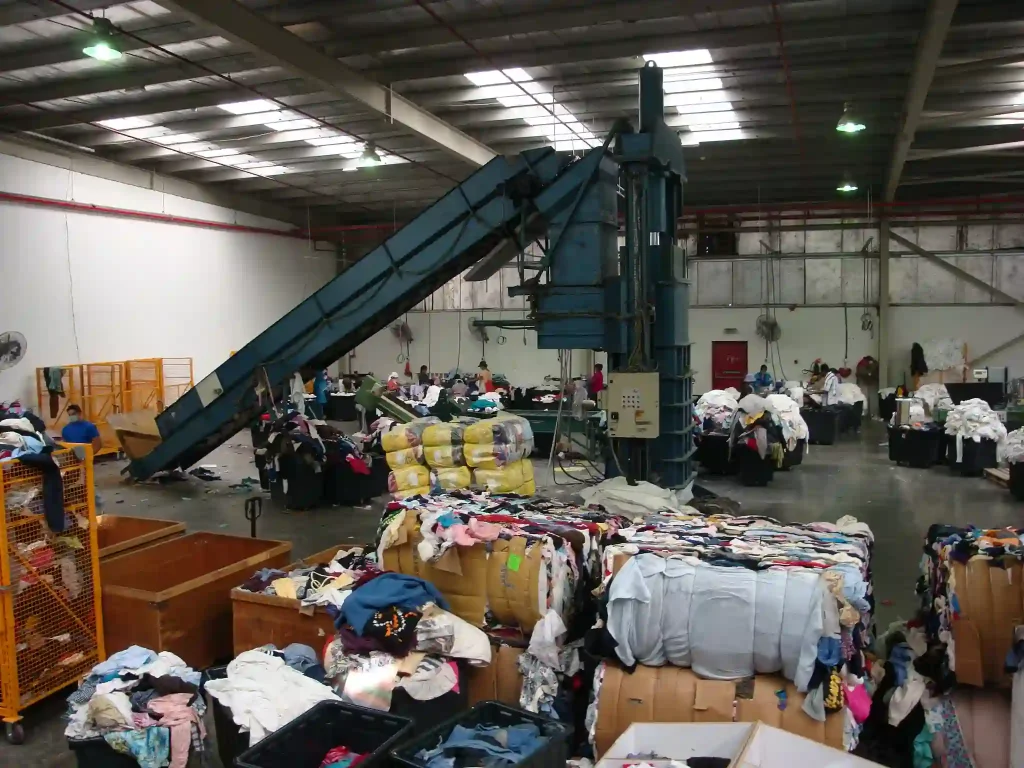Environment
Fast Fashion and its impact on the environment
- Ishita Paul
- October 20, 2022
“Seventy-five per cent of fashion supply chain material ends up in landfills. This amounts to ‘the equivalent of one garbage truck of textiles per second."
Pulse of the Fashion Industry 2018 Report Tweet
A design, manufacturing, and marketing strategy called “Fast Fashion” is geared toward quickly producing large quantities of garments. By definition Fast Fashion is inexpensive clothing produced rapidly by mass-market retailers in response to the latest trends. Its goal is to introduce current catwalk trends and high-fashion designs to retail outlets when demand is at its peak by mass-producing them cheaply and replicating them in large quantities. This comes with heavy negative environmental consequences. The alternative? Minimalism and Organic Clothing.
The availability of trendy, cheap clothing has caused an industry-wide shift toward excessive levels of consumption. As a result, the environment, garment workers, animals, and eventually, consumer wallets suffer adverse effects. Fast fashion is neither ethical nor environmentally friendly. Companies frequently produce more than they can sell in the textile and garment sector. It’s very common for them to resort to seasonal sales and discounts to get rid of massive inventory or simply dump it in landfills.
Fashion was slow prior to the industrial revolution (in the 1700s). Clothes were produced in small fashion houses and that too, not in large quantities. It took a long time and a lot of effort to source the materials, weave the fabric, cut the clothes, and sew them. Since it took so long to produce new items, the clothing industry was not a viable economic model.
After the first industrial revolution, all industries and business models underwent significant changes. The fashion and textile industries were most affected. It had a long-lasting impact on our lifestyles; how we create and use clothing today. Rapid industrialization made clothing a dispensable item!
Hand labour, which had been required for thousands of years to produce garments, was gradually displaced by machines. The development of the spinning wheel was one of the key advancements in the clothing industry. New fashion trends as well as significant financial success and economic power accompanied technical innovation.
Fast fashion is quite popular today and represents a society that works on instant gratification. Every week, thousands of new styles are created and sold.
The year-round demand for speed and value by consumers leads to overproduction and consumption of cheap apparel. It is also a key factor in the fashion industry’s expansion.
Instant gratification in particular resonates with millennial and Gen Z consumers. They demand immediate gratification even when placing online orders and have quickly adapted ‘click and collect’.
Consumers of today demand affordable fashionable clothing that draws inspiration from runway shows. Numerous consumers let social media influencers and celebrities shape their purchase decisions.
The rise of influencer marketing, social media, and eCommerce allowed online retailers to grow massively.
Get on step closer to making eco-friendly choices
In this tweet, twerk, and twisted world we are living in, we identify ourselves with the kind of clothes we wear. The alluring and countless trends force consumers to seek out more. The never-ending reasons for sales have increased the affordability of clothes. This has resulted in the development of a ‘’throwaway culture” in the present generation. With such a huge demand in the market and the means to rapidly manufacture, the fast-fashion modes of production, distribution, and marketing have vigorously grown over the past decade. But fast fashion, although cheap, comes with a hefty price tag of negative environmental consequences. As fast fashion grew more popular, so did its carbon footprint.

The clothing business is now one of the world’s most polluting sectors. A research paper by Rita Kant suggests that the textile industry contributes around 17-20% of global industrial water pollution (Kant 2012). Fashion is one of the most water-intensive industries. The 93 billion cubic metres of water used annually by the fashion industry is sufficient to supply five million people with all their requirements.
The fashion sector has three significant negative effects on the environment related to water, from manufacturing to disposal: high water use, high levels of chemical pollution, and high levels of physical microfibre pollution.
According to Levi Strauss & Co., producing a pair of jeans emits as much carbon as driving a car 80 miles.
Interestingly, according to World Bank, the same pair of jeans requires a staggering 3,781 litres of water to make it through the production line. Yes! 3781 litres of water for a single pair of jeans!
According to the United Nations Environment Programme, fashion contributes up to 10% of the world’s carbon dioxide emissions, which is more than international travel and shipping put together.
Further, to keep the prices of the clothes extremely low, fast fashion producers use cheap materials like polyester or rayon. After each wash and use, synthetic materials like polyester shed microscopic particles of plastic. These tiny plastic pieces, known as microplastics, harm animals that consume them by impeding their ability to develop and reproduce. They also damage waterways, oceans, and land.
The clothes utilize harmful dyes, poisonous chemicals, and synthetic materials that leak into water systems.
In India, the number of textile waste stands at a million tonnes annually, and the majority of this originates from domestic sources. Textile waste is also India’s third-largest source of municipal solid trash, according to the Indian Textile Journal.
Globally, an estimated 92 million tonnes of textile waste is created each year, which is equivalent to one rubbish truck full of clothes ending up in landfill sites every second. By 2030, 134 million tonnes of textile waste are expected to be discarded yearly.
Due to the insatiable need of people to follow the most ‘#trendy’ styles and the cheap quality of clothes that are worn out only after a few washes, the amount of clothes that society has consumed has skyrocketed over the years. As of 2019, 62 million metric tons of apparel were consumed globally. This over-consumption and the throw-away culture contribute to the ever-growing height and number of piles in landfills.
The time it takes for clothes to decompose in a landfill can be over 200 years because they do not biodegrade easily. These clothes, loaded with lead, insecticides, and numerous other toxins, seldom degrade. The carbon footprint of the clothing in landfill also rises as a result.

The term first coined by design activist and professor Kate Fletcher; ‘Slow Fashion’ has become a movement that encourages quality-based rather than quantity-based shopping. Slow fashion is the fashion industry’s minimalist subculture in production.
Slow Fashion is a method of making clothes that considers all the aspects of the supply chain, a method that respects the environment, the animals and the people. Participating in the movement means being extremely mindful of our buying choices. Here, quality is supreme. We only invest in pieces we feel can last a lifetime.
But even then, this option does include BUYING something new and should be used only when extremely needed.
Swapping is the easiest way to reduce your carbon footprint from clothes. When you exchange your clothes with somebody, you are not only getting a different piece of clothing but also giving a new life to the piece you are giving away. This way, you double the savings from landfills.
Buying clothes second-hand is another sustainable option. Since the pieces already exist, buying them would mean giving a new life to those pieces and saving them from landfills. But this should not mean that consumers selling second-hand clothes become unconscious about their choices and seek out more. Thinking that we could just sell the new dress after we use it, is not an excuse to consume or buy more.
Currently, it’s pretty difficult to recycle clothes made from mixed fibres (For example, 80% Wool and 20% Polyester). This is because, the current technology cannot separate blended fibres at a large scale.
It’s all about getting rid of the unnecessary to make room for the things that actually bring you pleasure and real value. A small collection of clothes that fit you well and bring you joy is what is meant by the term “minimalist fashion.”
Reusing, Reducing or Upcycling is the easiest way ahead. Upcycling clothing entails cutting and sewing used clothing and other textiles to make new, more valuable apparel. It gives the worn-out items in our closet a new life by culminating in something spectacular and one-of-a-kind. Much less energy is used in the upcycling of clothing than in recycling. It lessens the need for new garment production, which is tremendously wasteful and destructive, as well as pollution and textile waste.
Not every fabric can be recycled. However, upcycling clothes has a smaller environmental impact and is more effective than recycling them. Here are some fun ways to upcycle your clothes.!!
The most recurring argument against sustainable fashion is that it is expensive and not affordable for everyone. But we forget, that the reason why fast fashion is so cheap is because of the cheap production methods that don’t protect the environment
Labour for Fast fashion is mostly produced in low-income countries, which have extremely low wages. Low labour costs are a constant goal for fast fashion brands and retailers. They aim to meet consumer demand while boosting their profit margins. As a result, the cheap clothing we buy, we buy at the expense of labours who barely receive minimum wage and work in hazardous work environments
We need to change our attitude towards clothing. We need to focus on purchasing only what we need. Instead of spending on mindless trends, invest in pieces that you can own for a lifetime. Find and choose brands that, instead of running after trends, are using sustainable methods to create enduring styles. Recycle clothes and own a minimalist wardrobe. A life-changing experience is a lightness that follows after the removal of unwanted clutter. If none of these work for you, simply don’t buy clothes! Trust me, you have enough.